Concawe Review
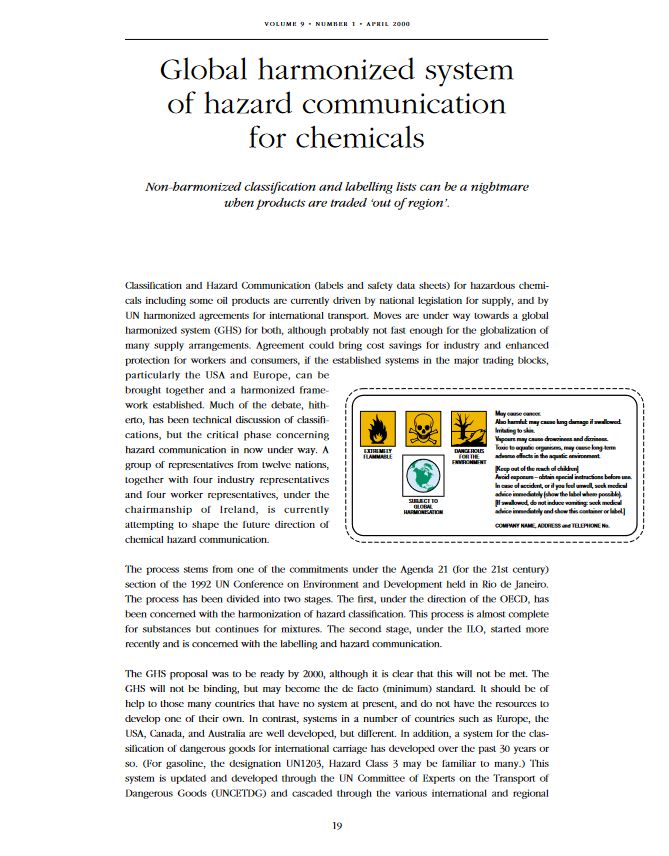
Concawe Reviews
Global harmonized system of hazard communication for chemicals
Classification and Hazard Communication (labels and safety data sheets) for hazardous chemicals including some oil products are currently driven by national legislation for supply, and by UN harmoni...
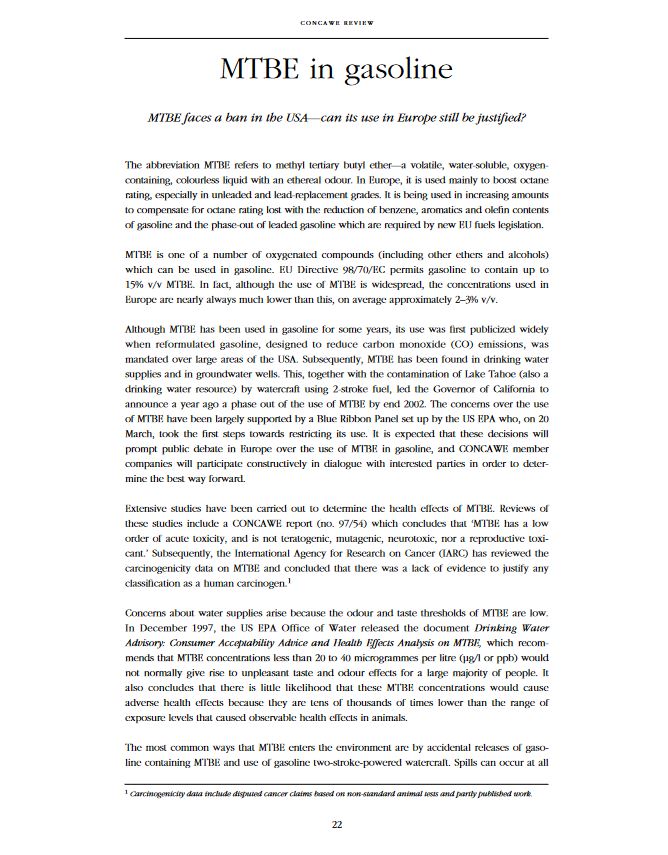
Concawe Reviews
MTBE in gasoline
The abbreviation MTBE refers to methyl tertiary butyl ether—a volatile, water-soluble, oxygencontaining,colourless liquid with an ethereal odour. In Europe, it is used mainly to boost octane rating...
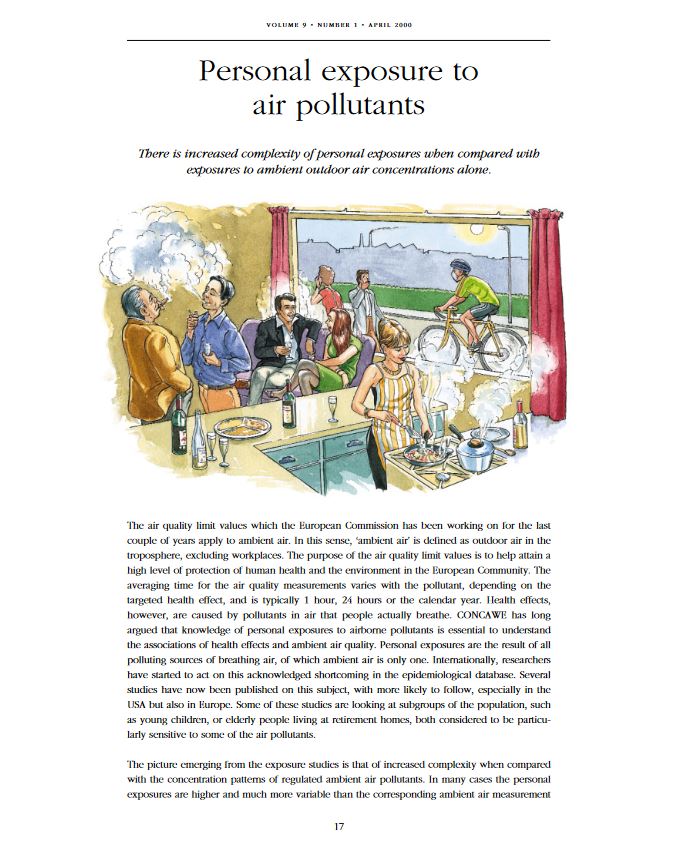
Concawe Reviews
Personal exposure to air pollutants
The air quality limit values which the European Commission has been working on for the last couple of years apply to ambient air. In this sense, ‘ambient air’ is defined as outdoor air in the tr...
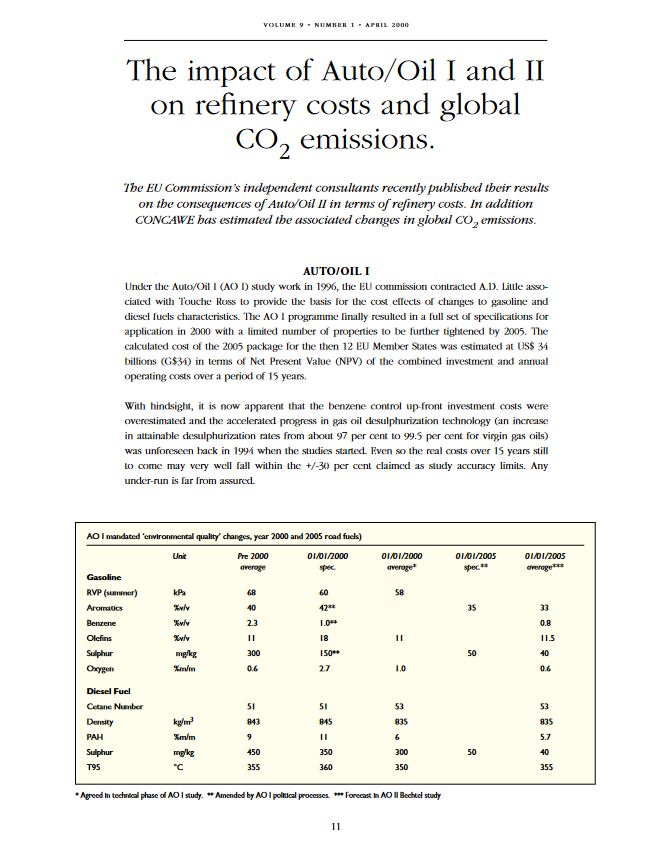
Concawe Reviews
The impact of Auto/Oil I and II on refinery costs and global CO2 emissions.
Under the Auto/Oil I (AO I) study work in 1996, the EU commission contracted A.D. Little associated with Touche Ross to provide the basis for the cost effects of changes to gasoline and diesel fuels c...
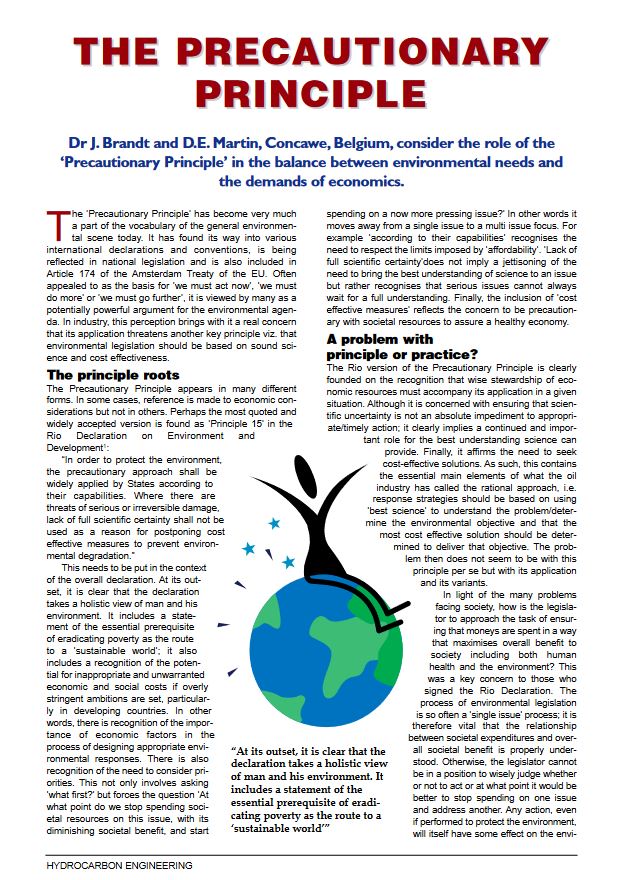
Concawe Reviews
The Precautionary Principle
The ‘Precautionary Principle’ has become very much a part of the vocabulary of the general environmental scene today. It has found its way into various international declarations and convention...

Concawe Reviews
CONCAWE Review – Autumn 1999
Volume 8 • Number 2: In May this year the CONCAWE Council elected me as the new Chairman of the organization. It is both a privilege and a challenge to take over this responsibility.
A privilege...
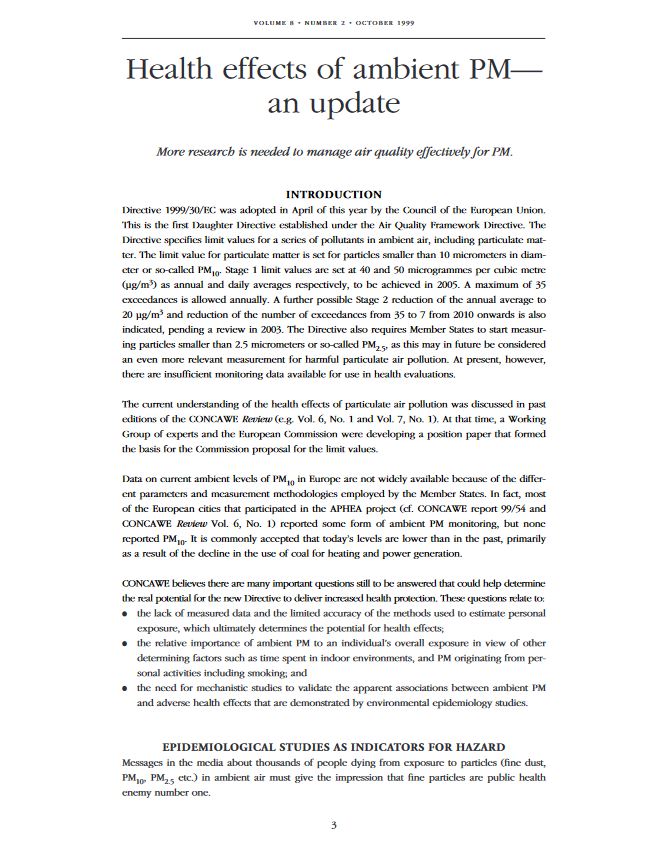
Concawe Reviews
Health effects of ambient PM— an update
Directive 1999/30/EC was adopted in April of this year by the Council of the European Union. This is the first Daughter Directive established under the Air Quality Framework Directive. The Directive...
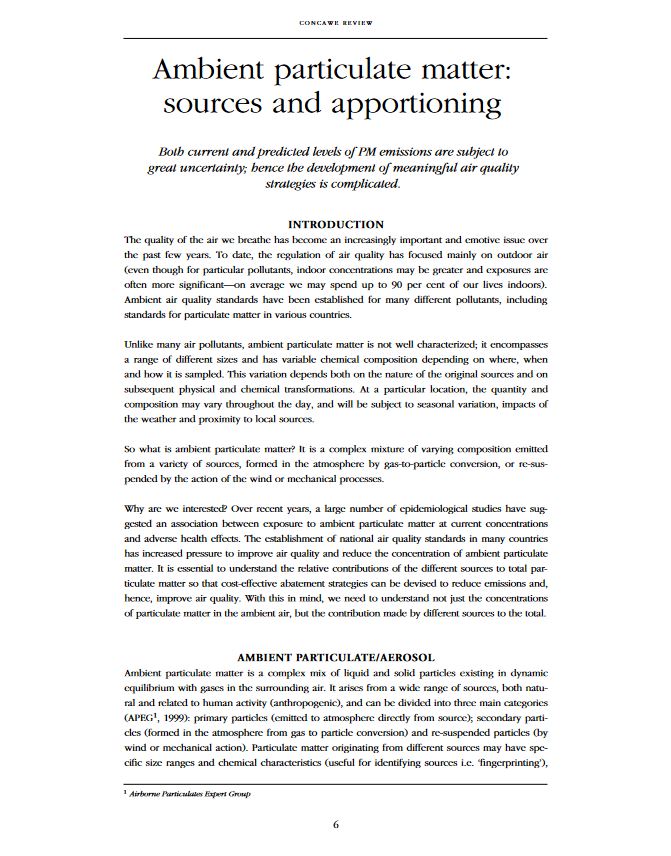
Concawe Reviews
Ambient particulate matter: sources and apportioning
The quality of the air we breathe has become an increasingly important and emotive issue over the past few years.
To date, the regulation of air quality has focused mainly on outdoor air (even th...
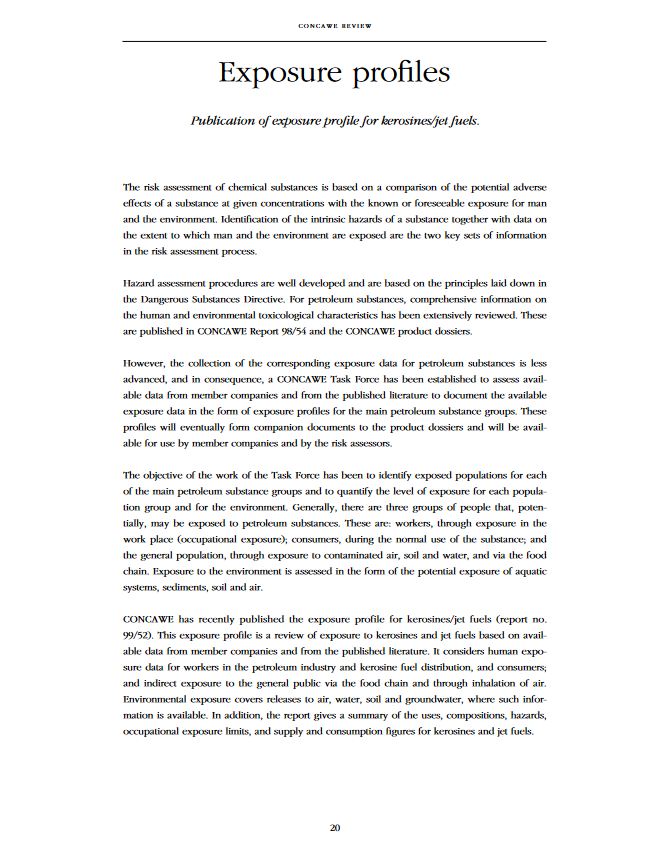
Concawe Reviews
Exposure profiles
The risk assessment of chemical substances is based on a comparison of the potential adverse effects of a substance at given concentrations with the known or foreseeable exposure for man and the env...

Concawe Reviews
Fuels and engines need to be developed together
Much discussion has taken place in Auto/Oil-I, Auto/Oil-II and many other forums on how to achieve air quality targets in a scientific and cost-effective way. The basis is sound science, starting wi...
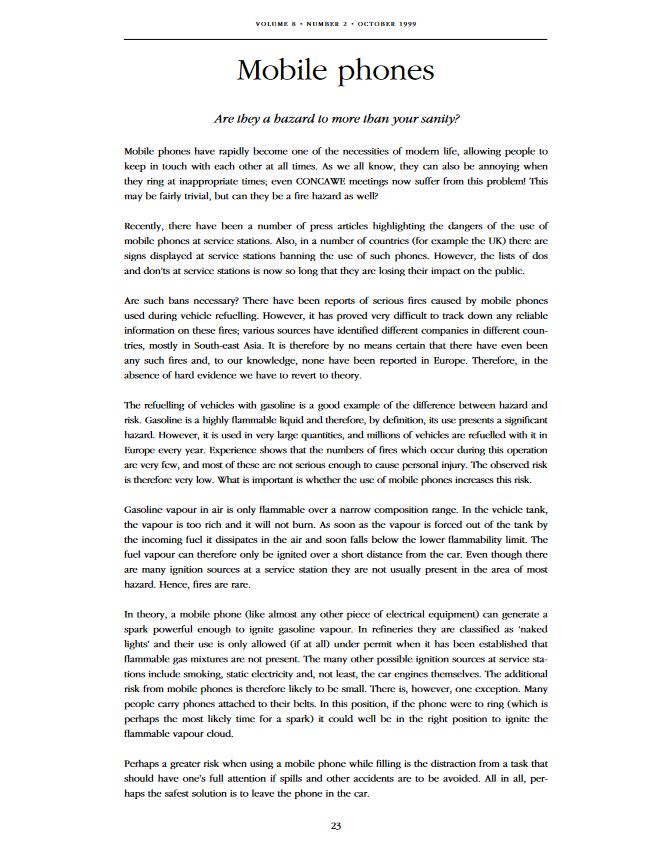
Concawe Reviews
Mobile phones
Mobile phones have rapidly become one of the necessities of modern life, allowing people to keep in touch with each other at all times. As we all know, they can also be annoying when they ring at inap...
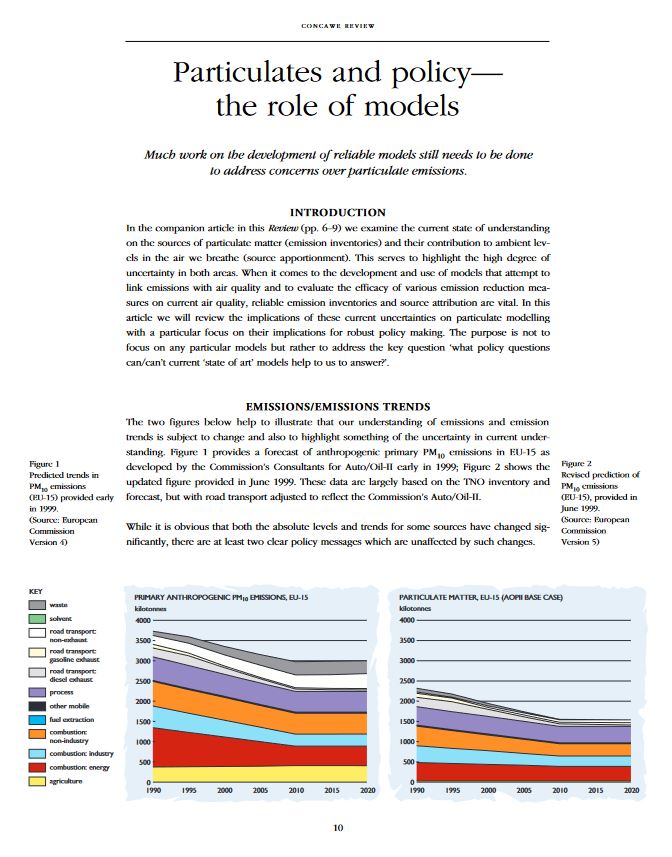
Concawe Reviews
Particulates and policy — the role of models
In the companion article in this Review (pp. 6–9) we examine the current state of understanding on the sources of particulate matter (emission inventories) and their contribution to ambient levels�...

Concawe Reviews
CONCAWE Review – Spring 1999
Volume 8 • Number 1: Dear Reader,
The past year has seen a dramatic fall in the price of crude oil, resulting in a number of high profile mergers, and further cost-cutting and staff reduction pr...
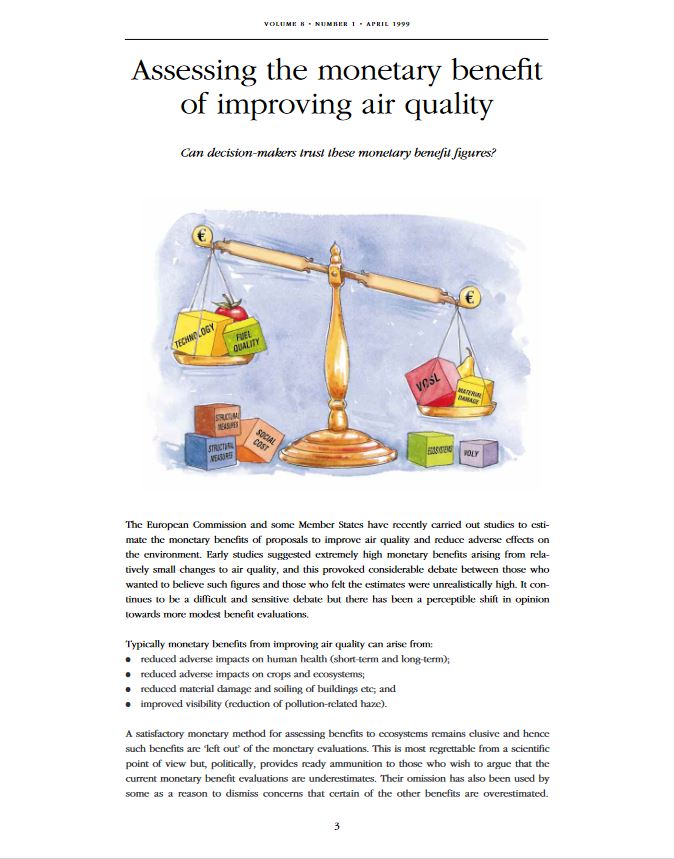
Concawe Reviews
Assessing the monetary benefit of improving air quality
The European Commission and some Member States have recently carried out studies to estimate the monetary benefits of proposals to improve air quality and reduce adverse effects on the environment....
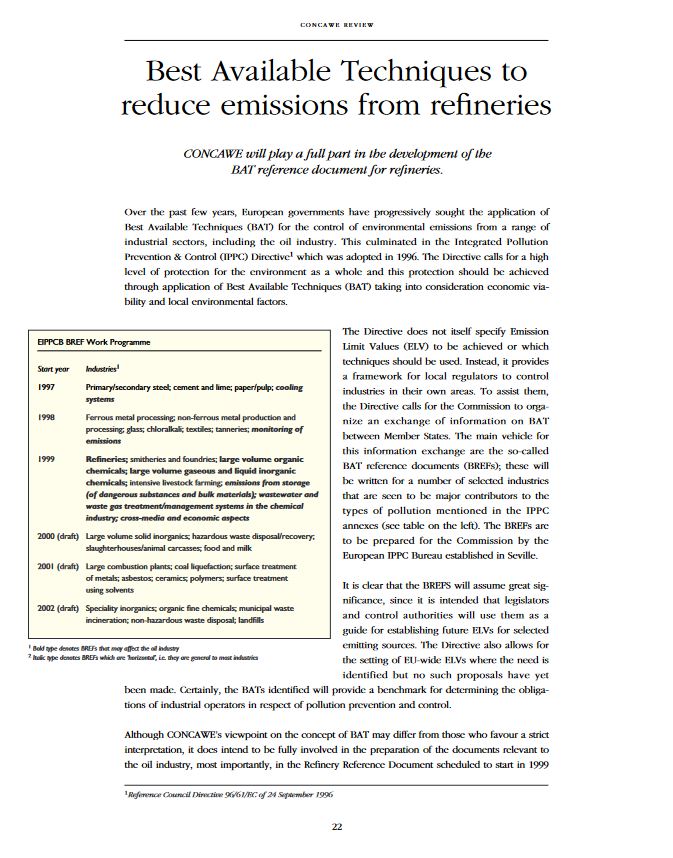
Concawe Reviews
Best Available Techniques to reduce emissions from refineries
Over the past few years, European governments have progressively sought the application of Best Available Techniques (BAT) for the control of environmental emissions from a range of industrial sectors...
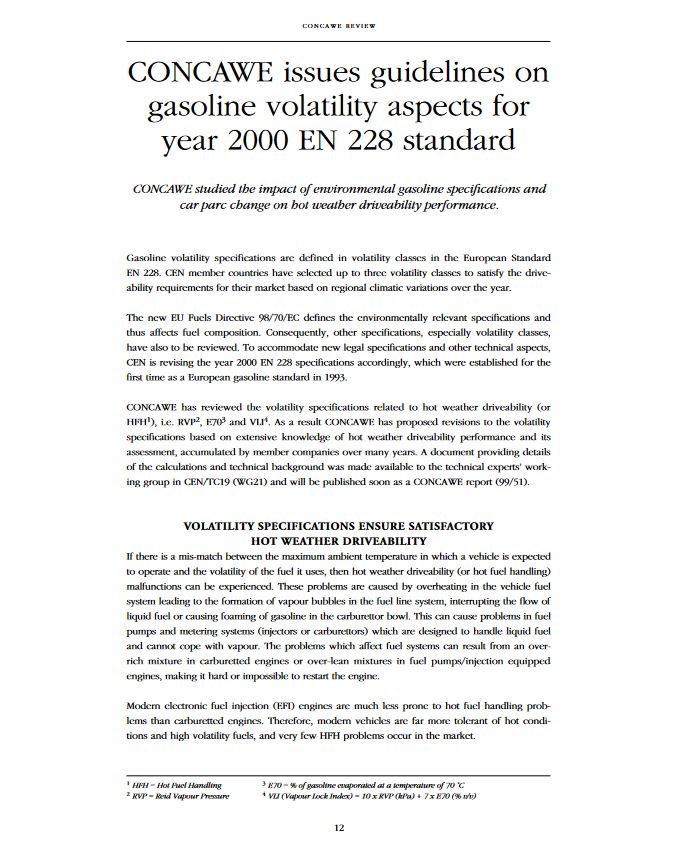
Concawe Reviews
CONCAWE issues guidelines on gasoline volatility aspects for year 2000 EN 228 standard
Gasoline volatility specifications are defined in volatility classes in the European Standard EN 228. CEN member countries have selected up to three volatility classes to satisfy the driveability re...
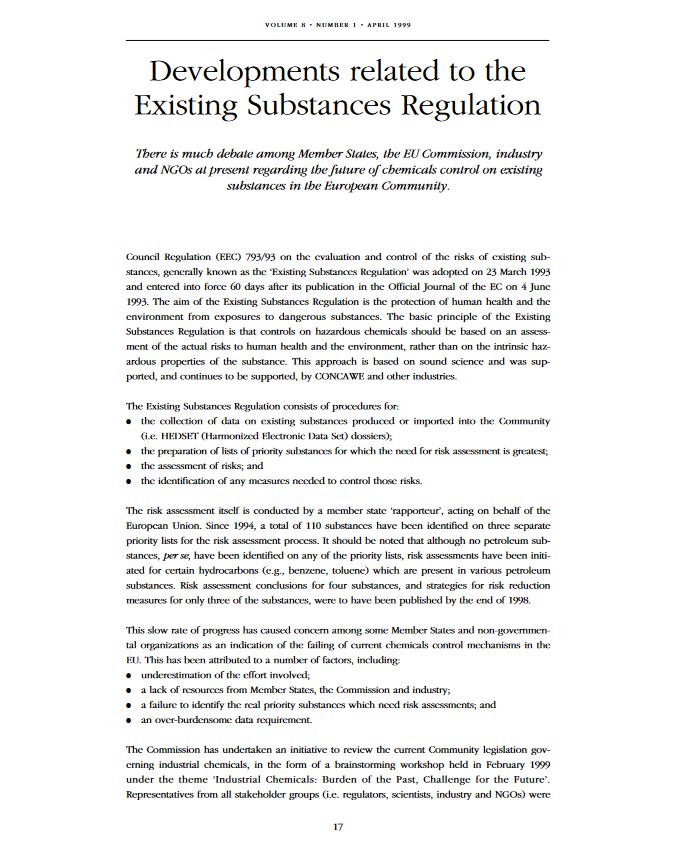
Concawe Reviews
Developments related to the Existing Substances Regulation
Council Regulation (EEC) 793/93 on the evaluation and control of the risks of existing substances, generally known as the ‘Existing Substances Regulation’ was adopted on 23 March 1993 and entere...
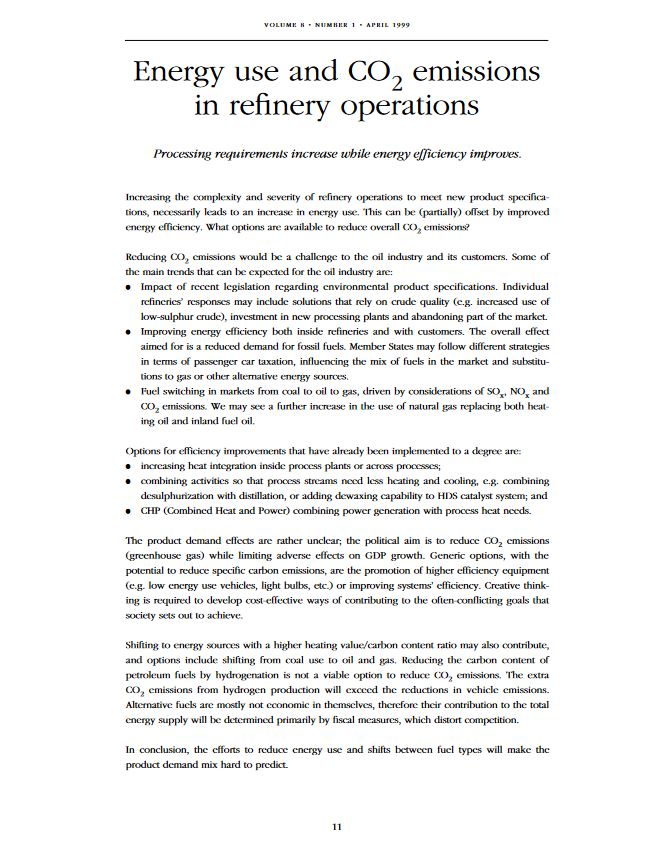
Concawe Reviews
Energy use and CO2 emissions in refinery operations
Increasing the complexity and severity of refinery operations to meet new product specifications, necessarily leads to an increase in energy use.
This can be (partially) offset by improved energy e...
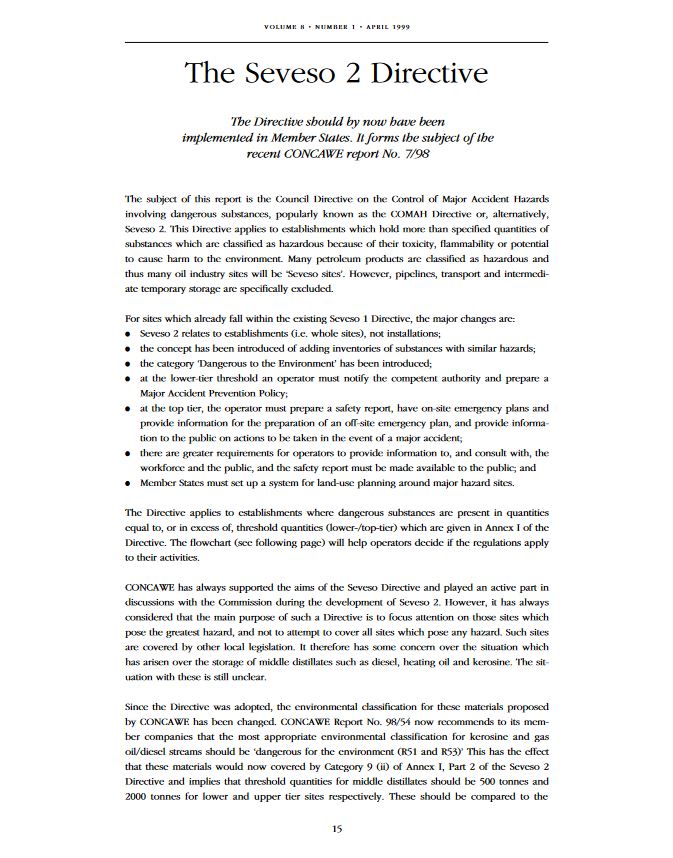
Concawe Reviews
The Seveso 2 Directive
The subject of this report is the Council Directive on the Control of Major Accident Hazards involving dangerous substances, popularly known as the COMAH Directive or, alternatively, Seveso 2. This...
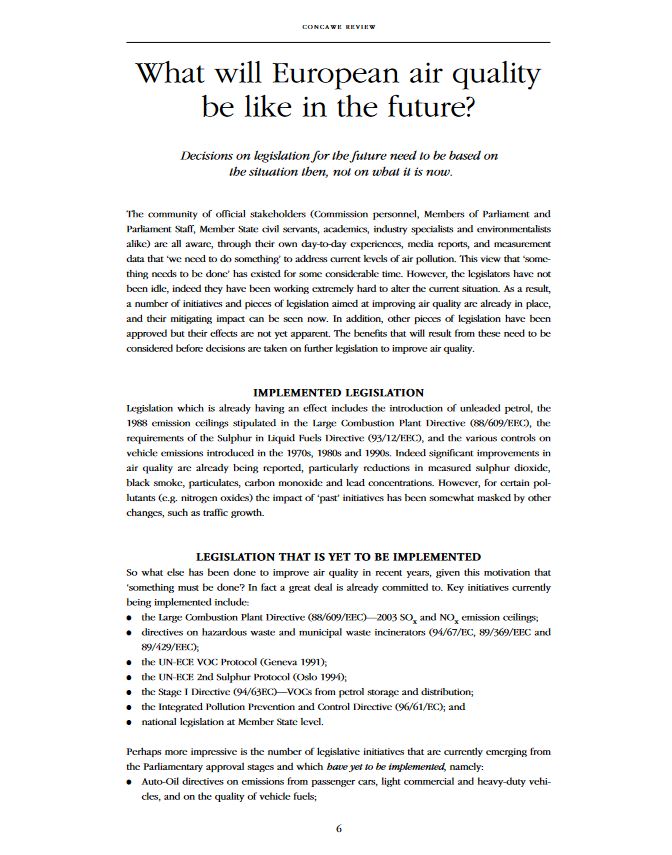
Concawe Reviews
What will European air quality be like in the future?
The community of official stakeholders (Commission personnel, Members of Parliament and Parliament Staff, Member State civil servants, academics, industry specialists and environmentalists alike) ar...
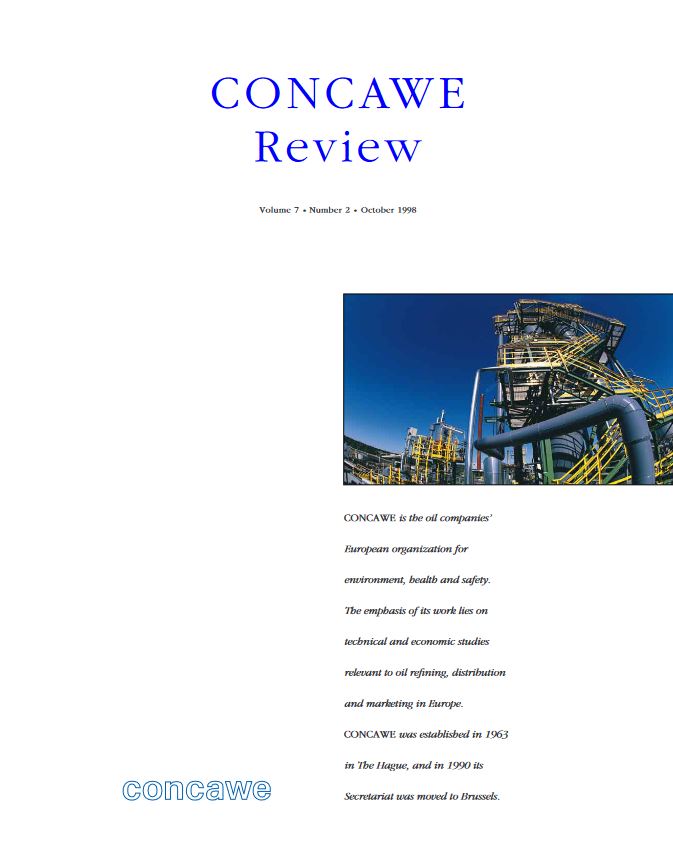
Concawe Reviews
CONCAWE Review – Autumn 1998
Volume 7 • Number 2: Dear Reader,
Agreement has now been reached between the Environment Council and the European Parliament on the 2000/2005 emission standards for passenger cars and light comm...
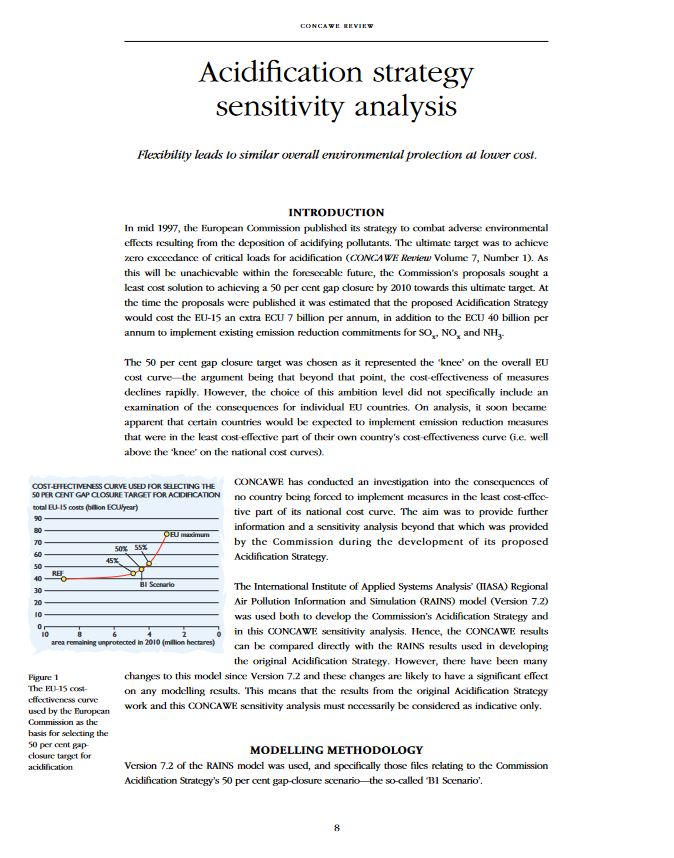
Concawe Reviews
Acidification strategy sensitivity analysis
In mid 1997, the European Commission published its strategy to combat adverse environmental effects resulting from the deposition of acidifying pollutants. The ultimate target was to achieve zero exce...
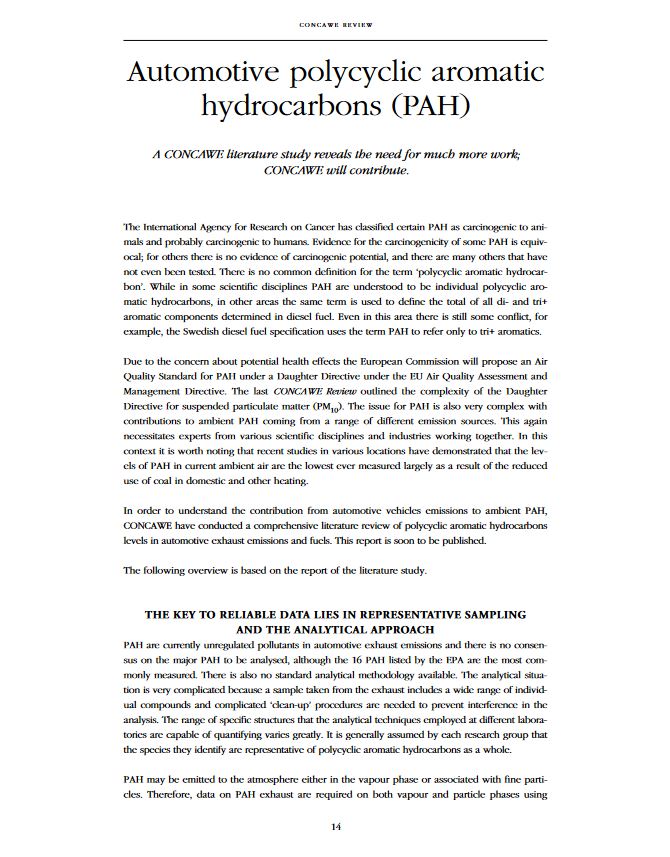
Concawe Reviews
Automotive polycyclic aromatic hydrocarbons (PAH)
The International Agency for Research on Cancer has classified certain PAH as carcinogenic to animals and probably carcinogenic to humans. Evidence for the carcinogenicity of some PAH is equivocal;for...
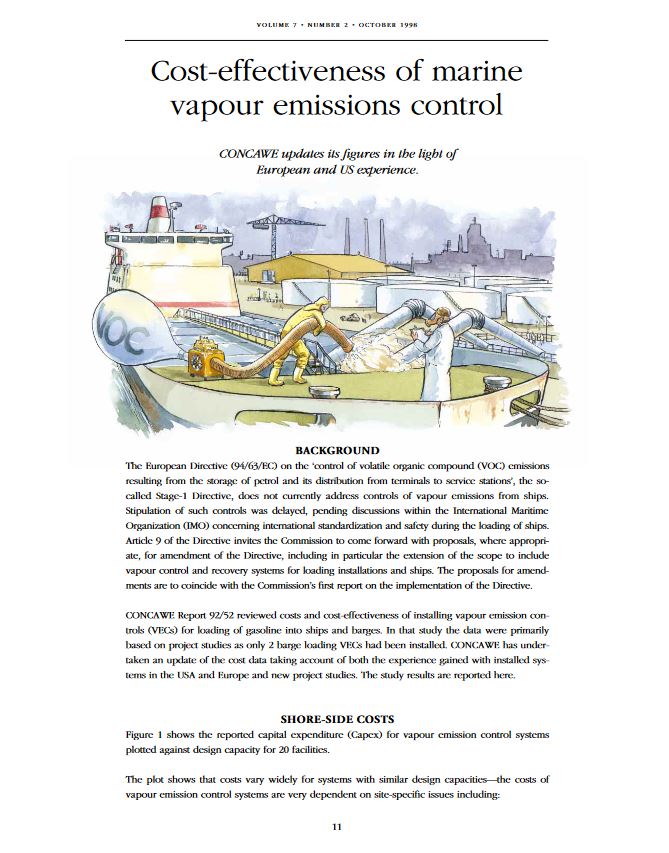
Concawe Reviews
Cost-effectiveness of marine vapour emissions control
The European Directive (94/63/EC) on the ‘control of volatile organic compound (VOC) emissions resulting from the storage of petrol and its distribution from terminals to service stations’, the so...